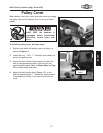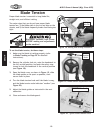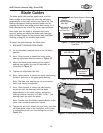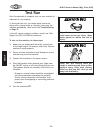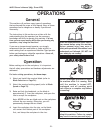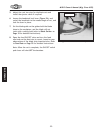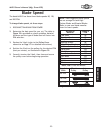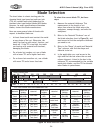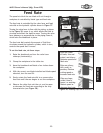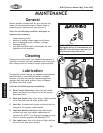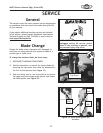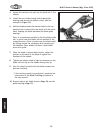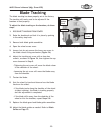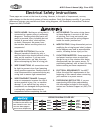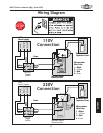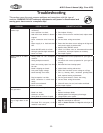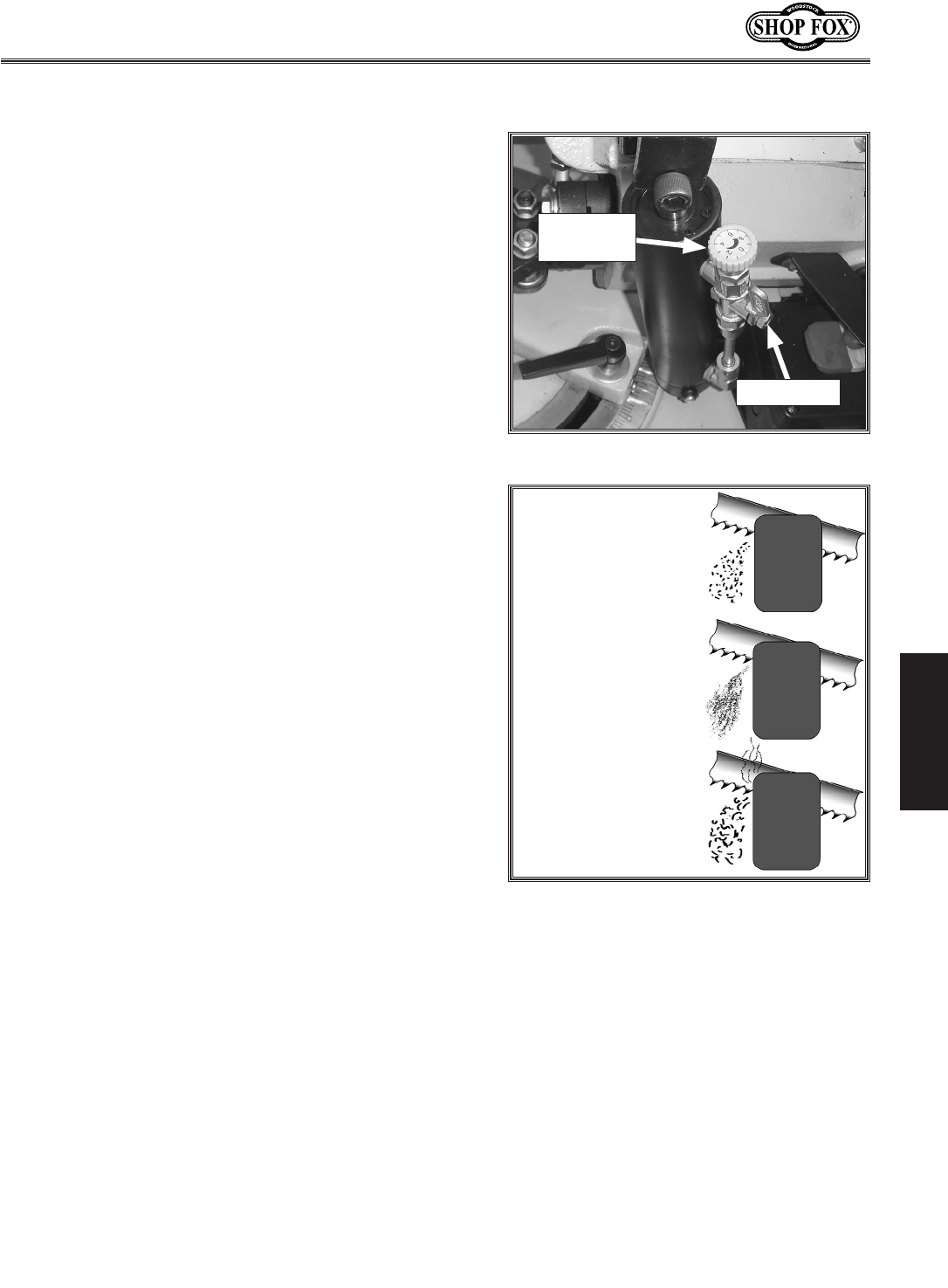
-25-
D('(*Fne\ijDXelXcD]^%J`eZ\-&'0
FG<I8K@FEJ
=\\[ IXk\
The speed at which the saw blade will cut through a
workpiece is controlled by blade type and feed rate.
The feed rate is controlled by the valve lever and feed
rate dial on the hydraulic cylinder shown in =`^li\)..
Turning the valve lever in-line with the piping, as shown
in the =`^li\)/, opens it up, which allows the fluid to
circulate and allows the head to move. Turning the valve
lever sideways or perpendicular to the piping closes it,
which locks the headstock in place.
The feed rate dial controls the amount of fluid that
circulates around the hydraulic cylinder, which in turn,
controls the speed that it moves.
Kfj\kk_\]\\[iXk\#[fk_\j\jk\gj1
(% Raise the headstock and turn the valve lever
sideways (horizontally).
)% Clamp the workpiece in the table vise.
*% Move the headstock and blade a few inches above
the workpiece.
+% With the correct saw blade installed and blade speed
selected, turn the saw ON.
,% Slowly rotate the feed rate dial to a conservative
feed rate until the saw begins to cut the workpiece.
-% Observe the chips that exit the cut, and increase
or decrease the feed rate according to the chip
characteristics (see =`^li\)/).
=`^li\).% Feed rate dial and lever.
Feed Rate
Dial
Valve Lever
=`^li\)/% Reading chip characteristics.
Chips are silvery,
thin, small, or
powdery: Reduce
cutting speed or
increase feed rate.
Chips are large,
curled, blue or
brown, or smoking:
Reduce speed or
decrease feed rate.
Chips are width
of tooth, thin and
curled, and silvery:
Optimum speed and
feed rate.



